ASUS PRIME B560-PLUS LGA 1200 ATX Motherboard
$89.99
In stock
Description
Whether you are a gamer or business-focused user, the PRIME B560-PLUS LGA 1200 ATX Motherboard from ASUS can provide you with massive flexibility and performance suitable for a wide range of uses. Harnessing the power of 11th Gen Intel processors, you can experience enhanced speeds with PCIe 4.0 technology, boosting M.2 SSD and graphics card performance.
The PRIME B560-PLUS is built on the Intel B560 chipset, giving you access to an LGA 1200 socket, allowing you to use a wide range of 10th and 11th gen processors. Four DDR4 RAM sockets allow you to install up to 128GB of memory for multitasking capabilities. Six SATA III and two M.2 PCIe ports allow you to expand your system storage with ease. Install an array of graphics and utility cards with one PCIe 4.0 x16, one PCIe 3.0 x16, and two PCIe 3.0 x1 slots. An array of USB 3.2 Gen 1 and Gen 2 ports allows you to connect various peripherals such as external drives and controllers with ease. A Gigabit Ethernet port gives you networking access, while HDMI and DisplayPort outputs allow you to experience crisp visuals for integrated graphics systems.
Additional information
| Weight | 2.44 lbs |
|---|---|
| Dimensions | 12.9 × 10.5 × 2.2 in |
| Chipset | Intel B560 |
| Expansion Slots | 1 x PCIe 4.0 x16 (x16 mode)<br />1 x PCIe 3.0 x16 (x4 mode)<br />2 x PCIe 3.0 x1 |
| Supported Operating Systems | Windows 10 (64-Bit) |
| Audio Codec | Realtek ALC897 (7.1-Channel) |
| I/O Connection Headers | USB 3.1 / USB 3.2 Gen 1 |
| ROM | 128 Mb |
| Legacy | 1 x Serial |
| Add-On | 1 x Thunderbolt Card Header |
| Diagnostics | Clear CMOS |
| LED Header | 4 x RGB |
| Security | Chassis Intrusion, TPM Module |
| Power Connectors | 1 x 24-Pin Mainboard<br />1 x 8-Pin ATX |
| Air Cooling | 1 x 4-Pin CPU<br />3 x 4-Pin System |
| Multi-GPU Support | None |
| U.2 | None |
| CPU Socket | LGA 1200 |
| M.2 | 1 x M Key 2242, 2260, 2280, 22110 (PCIe 4.0 x4, PCIe 3.0 x4)<br />1 x M Key 2242, 2260, 2280, 22110 (PCIe 3.0 x4) |
| SATA | 6 x SATA III |
| ECC Support | Non-ECC Unbuffered |
| Channel Architecture | Dual Channel |
| Maximum Capacity | 128 GB |
| Memory Support | DDR4 2133, 2400, 2666, 2800, 2933, 3200, 3333, 3466, 3600, 3733, 4000, 4266, 4400, 4600 MHz |
| Memory Slots | 4 x 288-Pin |
| PS/2 | 1 x Combo |
| Ethernet / Controller | 1 x Intel I219-V Gigabit |
| Display | 1 x DisplayPort <br />1 x HDMI <br />1 x VGA |
| Thunderbolt | None |
| USB | 1 x USB 3.1 / USB 3.2 Gen 1 Header (Supports 2 USB Type-A Port)<br />2 x USB 2.0 Header (Supports 4 USB Type-A Port) |
| Form Factor | ATX |
Reviews (8)
8 reviews for ASUS PRIME B560-PLUS LGA 1200 ATX Motherboard
Only logged in customers who have purchased this product may leave a review.
Related products
Desktop Components
ASUS Republic of Gamers STRIX 750W 80 Plus Gold Modular ATX Power Supply
Desktop Components
Desktop Components
Desktop Components
Desktop Components
ASUS Republic of Gamers Ryuo 120 All-in-One Liquid CPU Cooler
Desktop Components
Desktop Components
Desktop Components
SilverStone Strider 1200W 80 PLUS Platinum Modular ATX Power Supply


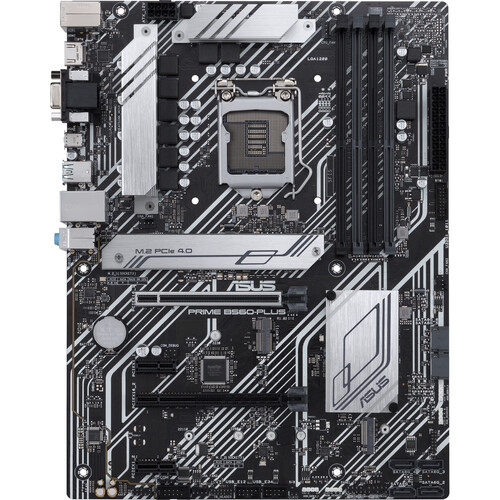
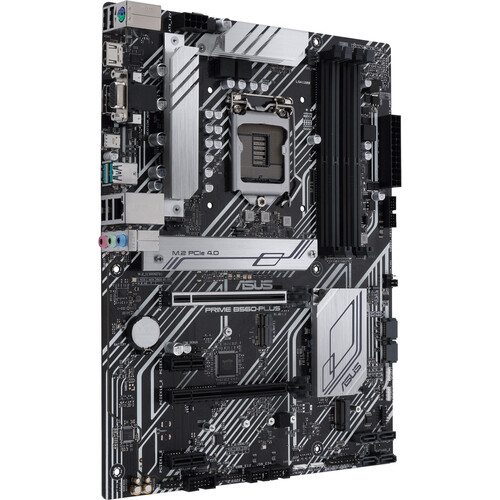
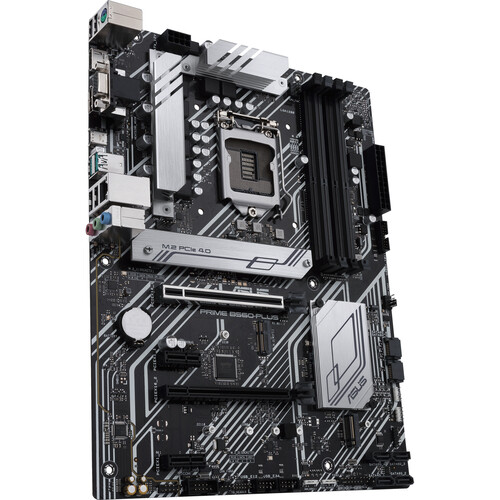
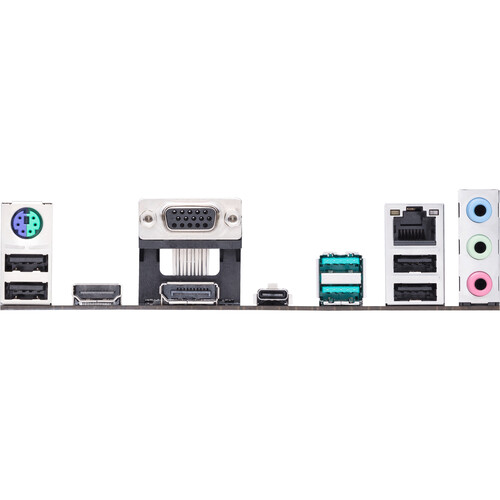
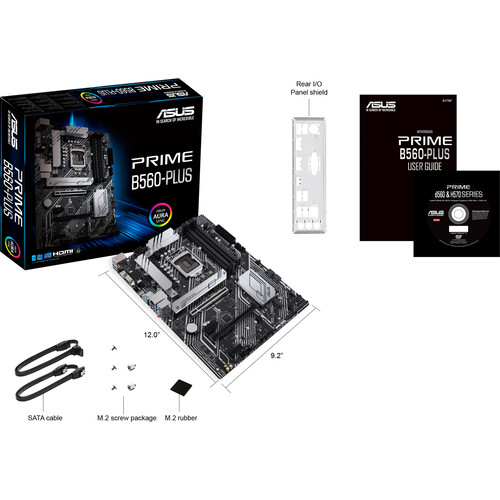
Era Schoen (verified owner) –
My previous mobo didn’t require an add on graphics card to select additional hdd or ssd like this one does, what is the point of this. If this feature is used on previous mobo why not continue doing so. Hope that I get as long of a service life on this one as did with the last. Hope I don’t regret deciding to go with this model, prove me wrong.
Ena O’Keefe (verified owner) –
Your asus fan xpert 3 has crashed my sytem and I’m having trouble getting it back up and running. Do you make a heat sink for the second second ssd slot?
Cristobal Predovic (verified owner) –
It was beyond my expectations Thank you for putting all these good features in this kid
Serenity Gerlach (verified owner) –
This motherboard is the best I’ve owned and I’m not a gamer.
Jordy Littel (verified owner) –
This is my first build, and its working great. Only issue I had was not knowing which GPU slot to stick my graphics card into. Had to get a fan splitter to fit my fans into the motherboard since i didnt know how to hook them into my power supply. Love the look of it and its working great so far. Its in a CoolerMaster H500M case, with an intel i5 10400F, Be Quiet! CPU cooler, 2 8GB ram sticks, 1TB intel storage SSD, Be Quiet! Dark Power Pro11 650W, and EVGA 3050 gpu. also running 1 exhaust, 1 cpu cooling fan, and 3 intake fans smoothly with the awesome coordinating RGB..
Aubrey Hauck (verified owner) –
Good quality board, easy to install. Bios is easy to use and understand. My case came with a usb-c port on the front. No where to plug it in to the motherboard. But that’s probably my fault for not checking before I ordered. I would recommend this board.
Drew Stamm (verified owner) –
It works very well as I need it to. I am an average user. Manual has lots of area can improve. Take me a while to figure it out how to get it working properly.
Lester Bosco (verified owner) –
I upgraded my old system (2nd gen i5, ASUS LGA 1155 mobo and 8Gb DDR3 RAM) using the Prime B560-Plus with an 11th gen i5 and 16Gb DDR4 RAM. One of the main reasons I did the upgrade was to get rid of my old GeForce GT430 graphics card. I specifically purchased a CPU with internal graphics and expected to be able to use the internal graphics to ELIMINATE my GT430. Long story short… after many hours of chat, phone and e-mail with the ASUS support personnel, it’s pretty clear the onboard graphics are never going to work for me for Windows 10. They work fine to get into the BIOS, but then it says I have no bootable devices. The only way I can see a bootable device (with Windows or anything else) is to add my GT430 to the configuration. ASUS support tells me I need a graphics card that supports UEFI VBIOS. That tells me I will never be able to use the on-board support. By the way, good luck finding a graphics card with UEFI VBIOS. That is not a feature that I can find ANY graphics card claiming to support. Not even on the ASUS product search! For now the GT430 seems to be working better than it was in my old configuration but I am miffed that I could not get rid of it. As far as a review of the rest of the board, it’s been good. Easy to install, no issues with anything else. I plan to add a Gen 4 M.2 soon and I’m happy that the board supports this in Gen 4 mode. One other small concern is that the full ATX board uses fewer standoffs (I think 6 in total) than my old ATX Micro board. This causes some of the edges to have more flex than seems appropriate when attaching cables or components.